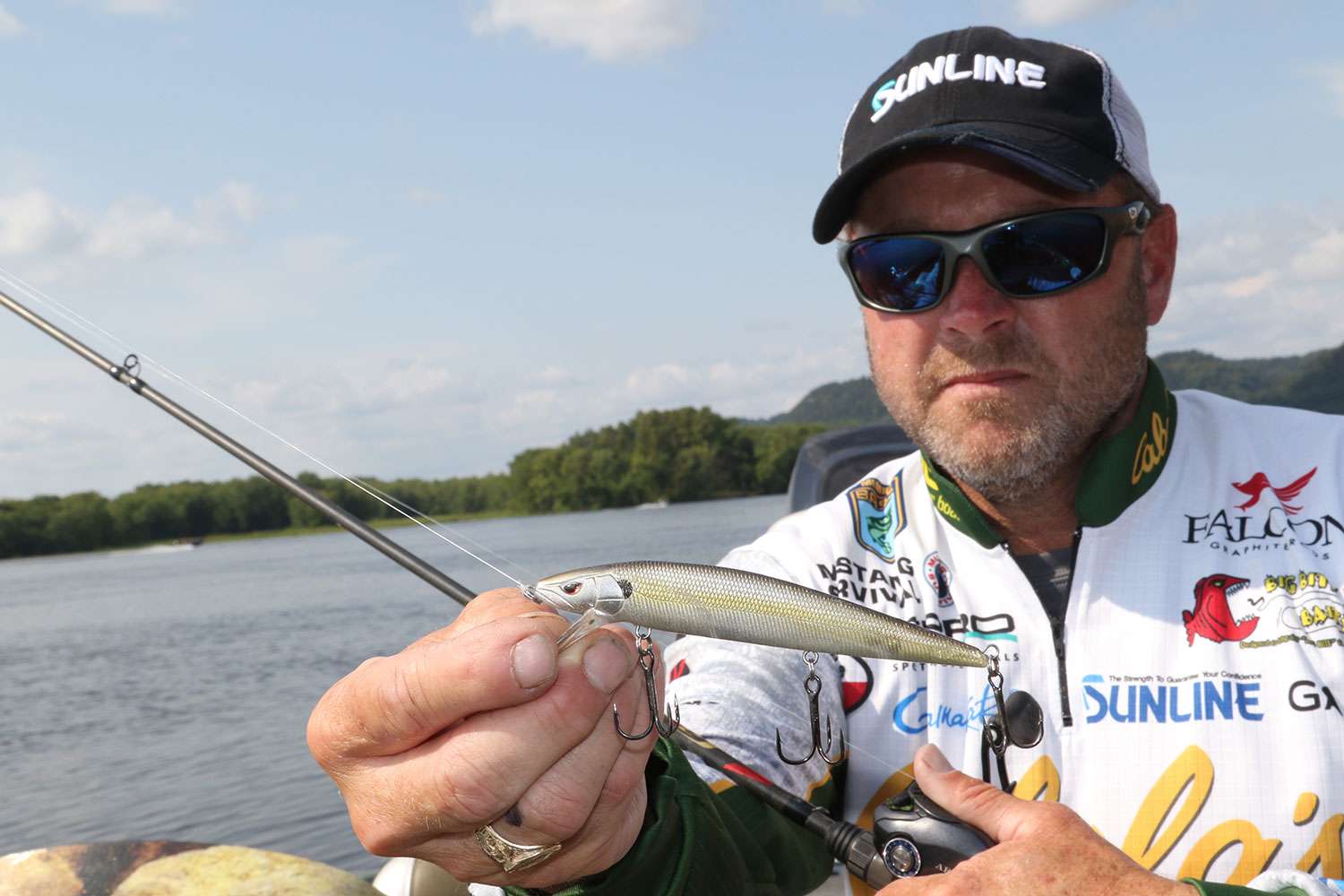
Plodding twitch-twitch-pause routines are pretty standard for early spring fish, but those in the know keep a jerkbait handy year-round for various scenarios. One of those is Elite pro Mike McClelland, the Arkansas angler who gained a higher degree of appreciation for this lure category through the R&D process for the McStick jerkbaits he designed for Spro.
“During prototyping and testing, I’d have to go throw the baits at times of the year that you really didn’t think was going to be good jerkbaiting,” McClelland said. “Doing so opened my eyes to how you can catch fish in so many different fashions.
“For so long, that early springtime, cold water, suspending type presentation was when a jerkbait was considered to work the best. But I’ve figured out that anytime fish are chasing bait, whether it be bream, shad or whatever, they’re susceptible to being caught on a jerkbait.”
Noting the ability to cover vast amounts of water while varying retrieves within each cast, McClelland said he’ll use a jerkbait for just about any period of the year from the first hint of spring thaw through the final days of fall’s decline.
About the only times he’d feel any hesitation would be the balmy stillness of summer’s dog days or winter’s glacial grip. Such scenarios simply render the jerkbait impractical.
That being said, let’s look at a sampling of jerkbait diversity:
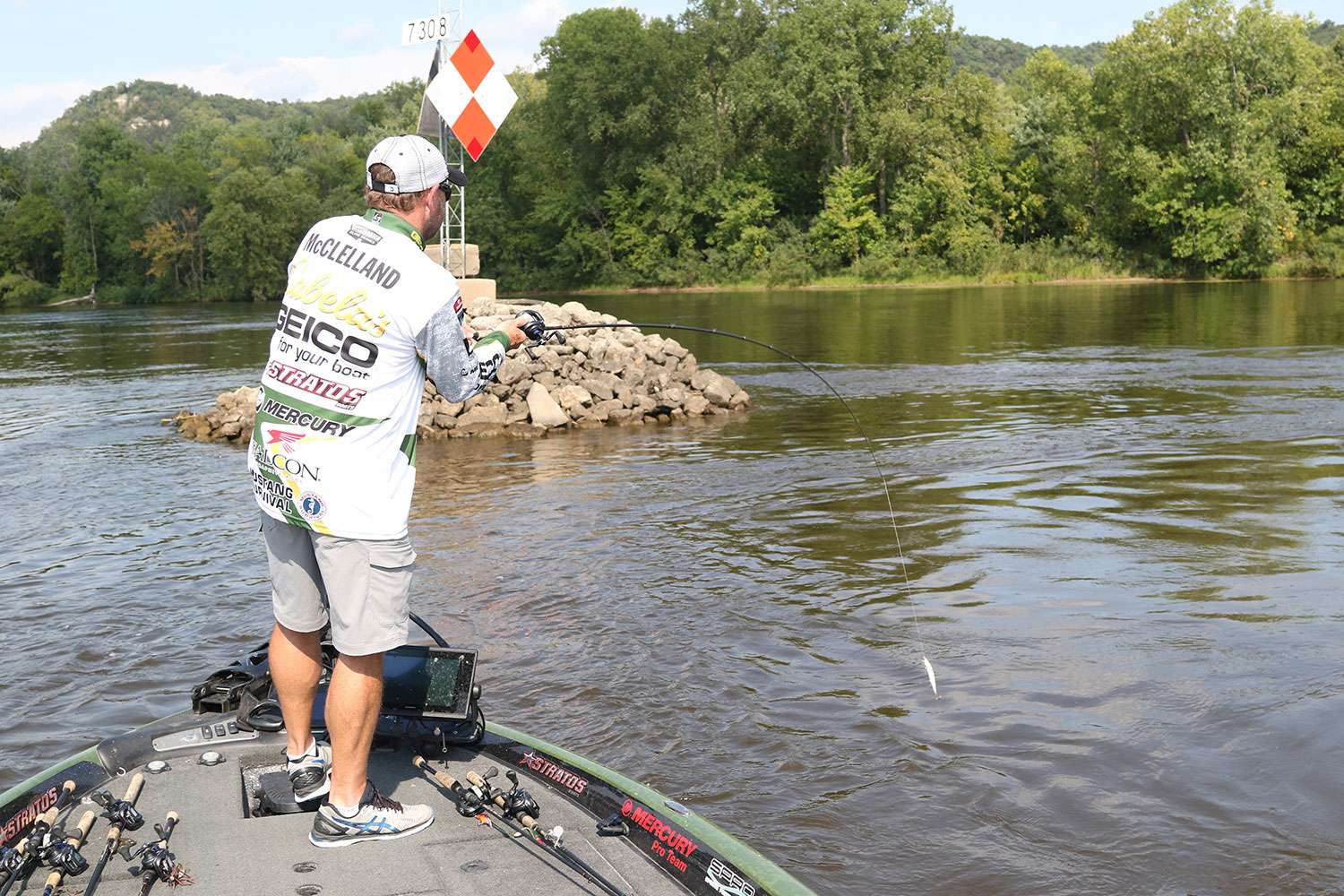
Winter Warm-ups: “On the highland reservoirs like Bull Shoals and Table Rock, you’re going to have days when you can pick up a few fish in the dead of winter, but that’s generally when the sun’s out, the bait rises really high in the water column and the fish push up a little bit.”
Maternity Ward: Bed fishing — ehh, there are too many baits of greater potential to force the jerkbait here. However, the right model can work wonders on hungry prespawners. When fish first start staging outside the spawning areas, McClelland attacks those outer breaks with the Spro McStick 110 — a suspending bait that hits the 5- to 7-foot range.
As the fish start moving closer to the bedding zone, he’ll switch to the McStick 115, but not before modifying this floater diver. Replacing the standard No. 5 Gamakatsu trebles with 2X No. 4s creates a nearly suspending action that allows him to fish the larger profile bait slow enough to irritate the increasingly territorial fish.
Dropping Back: After the spawn, those tired and stressed-out mamas will slide out to deeper recovery zones like standing timber. From Toledo Bend to any of the Ozark faves, fish chilling in treetops are suckers for a vulnerable looking jerkbait.
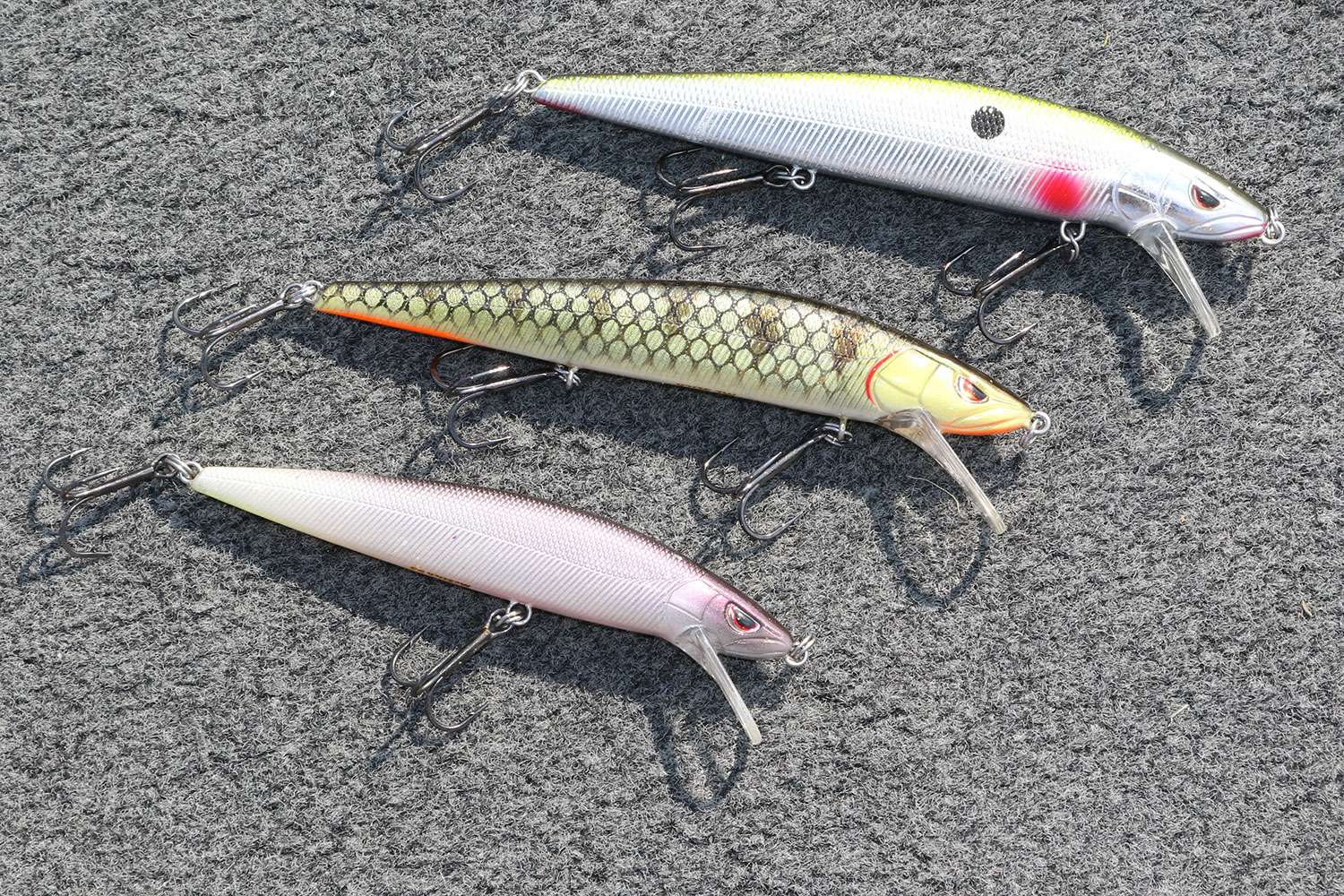
“I’ll use the 110 or the 115 here, and I’m not worried about the bait suspending because I’m fishing it relatively fast. I’m not letting it sit for long periods of time,” McClelland said. “I’m pausing it maybe two to five seconds, as opposed to 12 to 15 or 30 seconds (as in early spring).”
In this scenario, McClelland’s biggest challenge is finding which color triggers the fish. Tip: Adding a stripe of orange or chartreuse to a bait’s belly can turn lookers into biters.
“This is especially effective on smallmouth,” he said. “For example, Table Rock Shad (purple back with chartreuse sides) fits the bill when you’re looking for a bright bait. Sometimes they want a more subtle bait, but with a brighter belly.”
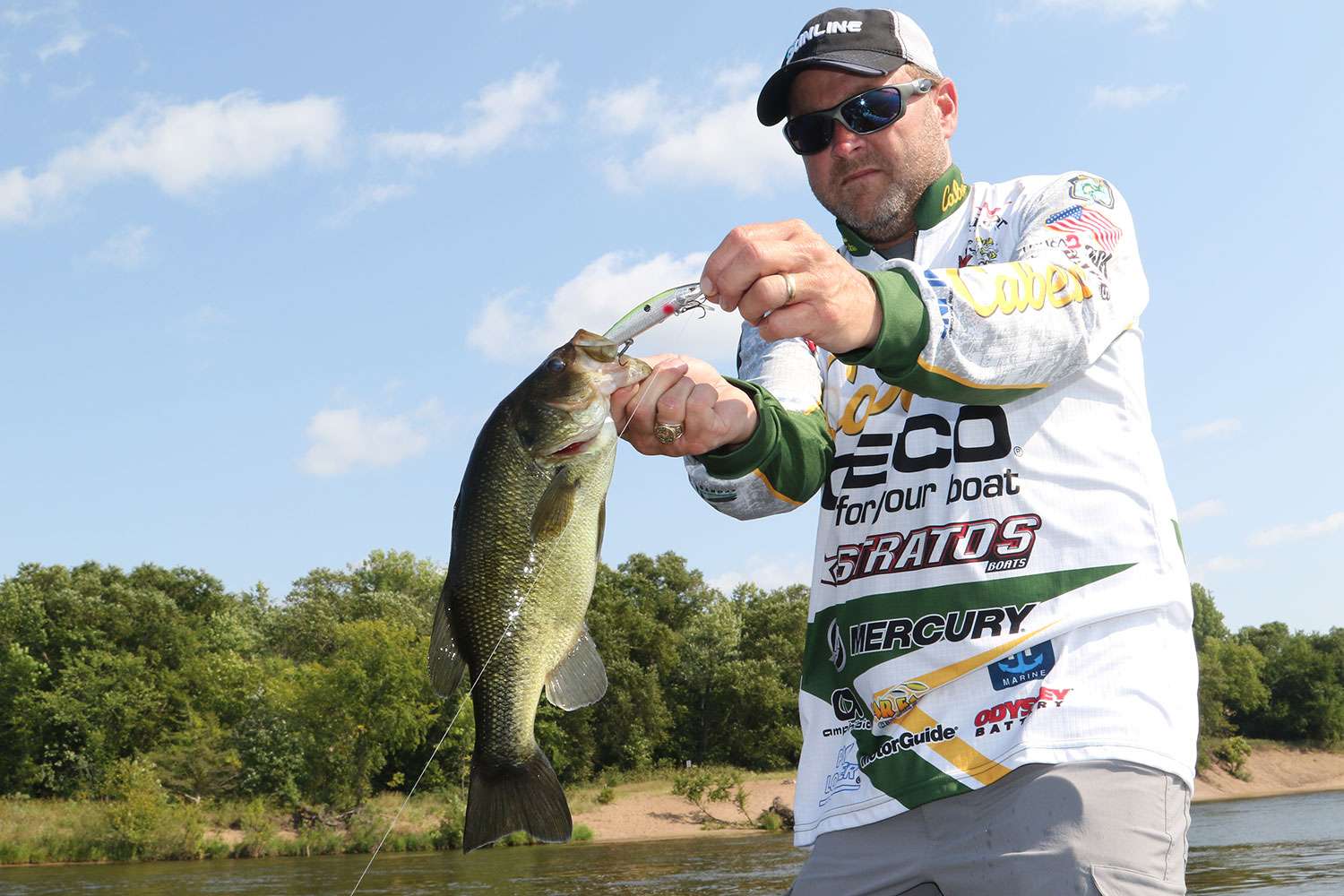
Filled to the “Bream”: We all know that bedding panfish mean lurking bass, but amid the prop baits, swim jigs and spinnerbaits, he suggests pausing a jerkbait all by its lonesome right in the kill zone. Matching bait models to bream bed depth is one of the keys to reaching those opportunistic bass.
“The 110 or the 115 size could be effective, but smaller 95 plays a role here, as well,” he said. “You’re dealing with a variety of bream sizes and I definitely feel that you have to match the size of bream in your area.”
Hot Spot: Even when he’s in shorts and a t-shirt, McClelland keeps his signature tactic on standby. He does, however, quickly clarify that he’s not trying to see how deep he can yank that jerkbait.
“It’s not that you’re trying to catch fish deep; you’re trying to catch fish that are suspended high in the water column and chasing bait,” he said. “It almost becomes a deal where you’re looking for schoolers. Whether it’s early in the morning or later in the afternoon, and you’re keeping the bait higher in the water column.
“When they’re chasing little threadfin shad, the 95 resembles those. And if they’re on big baits, you can keep the 115 shallower and close to the surface. So often, when you’re not getting good bites at the surface, the better fish are just below the smaller ones. They’re lazy; they’re taking advantage of the (wounded) leftovers.”
McClelland’s also quick to follow missed topwater bites — walking baits, buzzbaits — with a jerkbait presentation. If the fish lingers, it’s usually an easy sell.
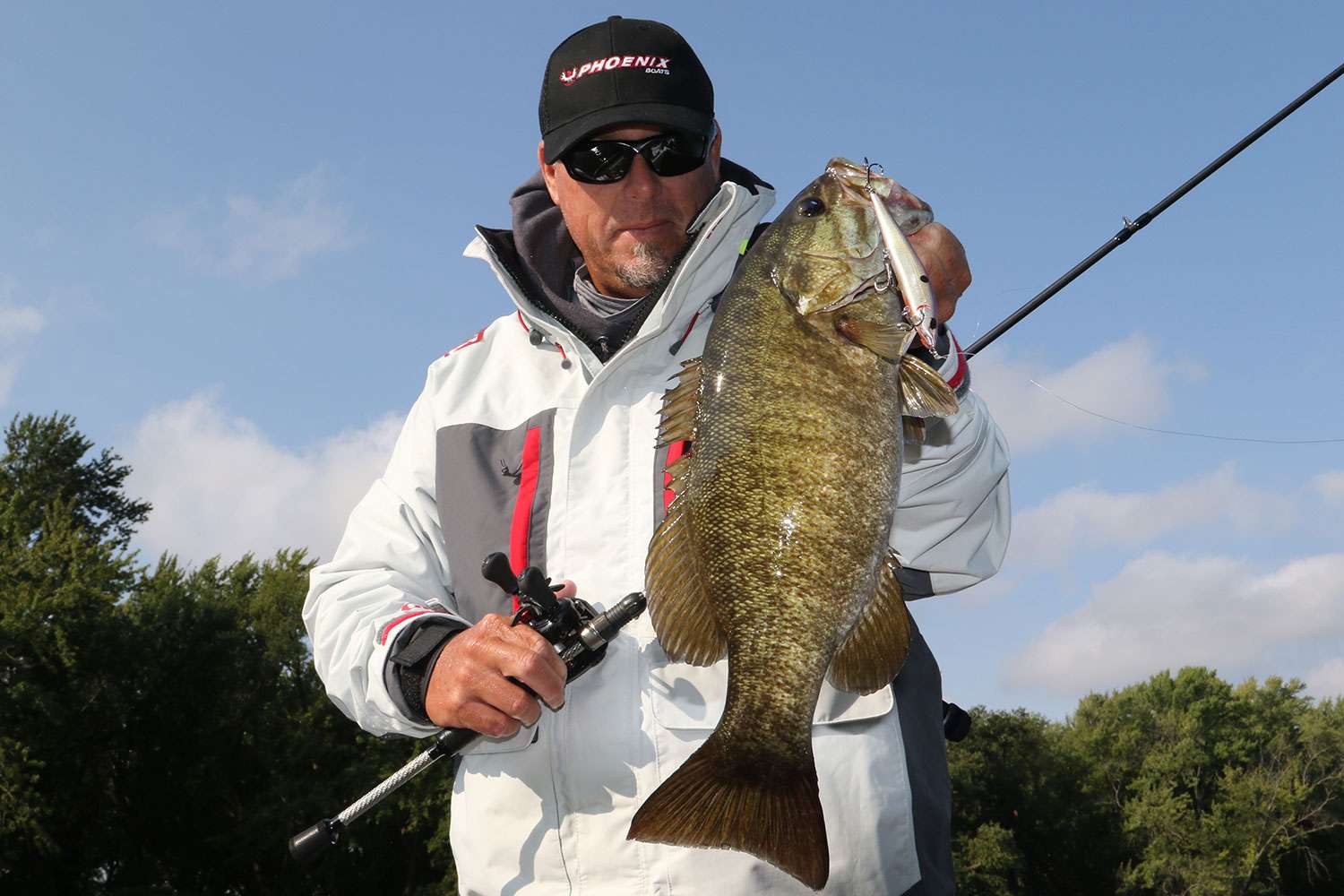
Autumn Attack: Alabama pro Russ Lane also keeps a jerkbait handy throughout the year, and one of his favorite opportunities occurs during the fall feeding frenzy. Targeting what he’d call the “gut” of a creek, Lane looks for bass rounding up shad over the shallow ditches and depressions that provide staging points for opportunistic bass.
“When I find the fish rounding up bait along the edges of shallow grass, I’ll throw a Spro McStick 115 on 14-pound Sunline Sniper fluorocarbon,” Lane said. “You want to vary your jerkbait cadence until you figure out what they want, but erratic is usually best.”
McClelland’s closing tip: Parabolic rods have their benefits (e.g.: hook set efficiency), but he prefers a stiffer rod with a soft tip because it requires less jerking effort to move the bait. Less arm action equals less fatigue and less fatigue generally means quicker, more effective response when you find a taker.





